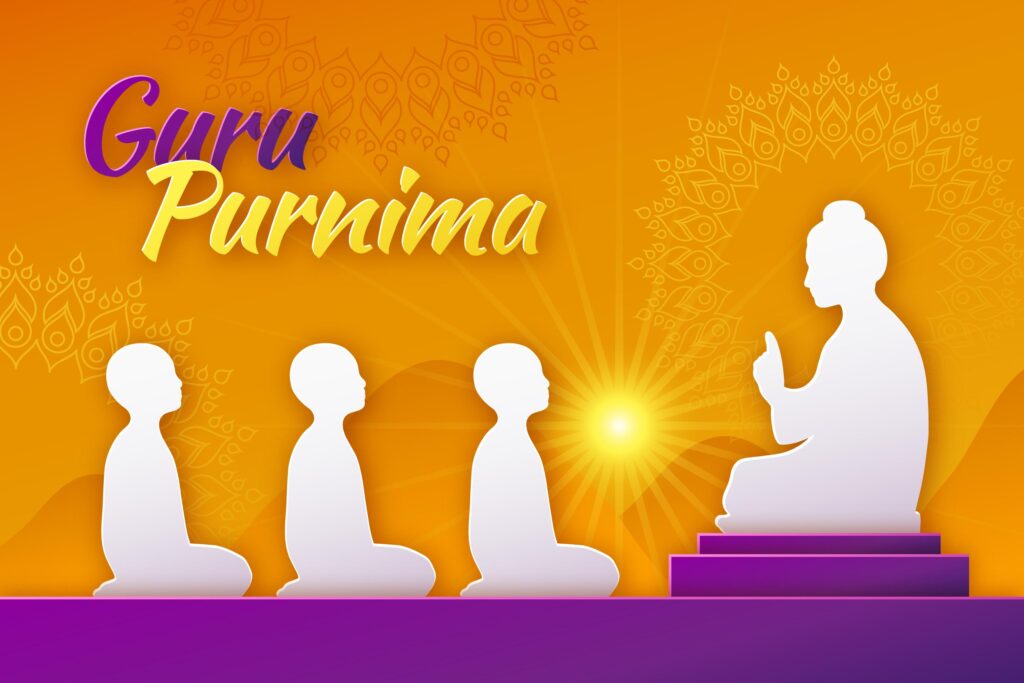Guru Purnima, also known as Vyasa Purnima, is a significant festival celebrated by Hindus, Buddhists, and Jains to honor and express gratitude towards their spiritual and academic teachers. The term “Guru” refers to a teacher or guide who imparts wisdom, knowledge, and enlightenment. Guru Purnima falls on the full moon day (Purnima) in the Hindu month of Ashadha (June-July). It is a day to pay homage to the gurus who have played a transformative role in our lives.
The Significance of Guru Purnima
Guru Purnima holds great significance in various cultures and traditions. It serves as a reminder of the importance of the guru-disciple relationship, where the guru is seen as the guiding light that leads the disciple from darkness to enlightenment. The word “Guru” is derived from Sanskrit, with “Gu” representing darkness and “Ru” representing light, symbolizing the guru’s role in dispelling ignorance and bringing forth knowledge.
Honoring the Guru
Guru Purnima is a day dedicated to expressing deep reverence and gratitude towards gurus and teachers. It is a time to acknowledge the invaluable contributions made by these individuals in shaping our lives. Students, disciples, and devotees observe this day by performing various acts of respect and gratitude.
Puja and Rituals
Devotees offer special prayers, perform rituals, and conduct puja ceremonies to honor their gurus. They adorn the guru’s feet with flowers and seek their blessings.
Guru Dakshina
Guru Dakshina, which is a token of gratitude in the form of a gift or offering, holds immense significance on this day. Disciples present their gurus with symbolic gifts, such as flowers, fruits, or other offerings, as a gesture of appreciation for the wisdom imparted.
Reflection and Learning
Guru Purnima is also an opportunity for introspection and self-reflection. Students and disciples reflect on their journey of learning, analyze the teachings received, and contemplate the wisdom acquired from their gurus. It is a time to rekindle the thirst for knowledge and renew the commitment to personal growth.
Satsang and Discourse
Satsang refers to a gathering where individuals come together to engage in spiritual or philosophical discussions. On Guru Purnima, disciples gather to listen to discourses, sermons, or lectures delivered by spiritual leaders or enlightened gurus. This fosters a sense of community and provides a platform for the exchange of knowledge and experiences.
While Guru Purnima is traditionally associated with honoring individual gurus, it also holds a broader connotation. It encourages us to recognize the presence of the universal guru, the divine consciousness that resides within every being. This universal guru manifests as the inner voice, guiding us toward truth, compassion, and self-realization. Therefore, Guru Purnima serves as a reminder that the ultimate guru lies within ourselves.
Conclusion
Guru Purnima is a profound celebration of the guru-disciple relationship, acknowledging the role of teachers in shaping our lives and guiding us on the path of knowledge and enlightenment. It is a day of gratitude, introspection, and learning. By honoring our gurus, we express our appreciation for the wisdom and guidance they have bestowed upon us. As we celebrate Guru Purnima, let us remember that the light of knowledge shines not only from external gurus but also from the eternal guru within ourselves.




